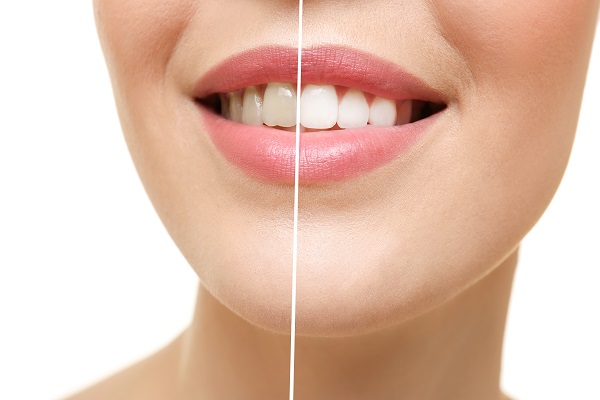Aftercare Tips: In-Office Teeth Whitening

In-office teeth whitening is a safe and comfortable procedure that is performed inside the dentist’s office. The recovery process is short, although keeping your new and bright smile white for as long as possible requires quality aftercare. This review offers insights into how to keep your smile looking great long-term.
Tips for after in-office teeth whitening
Every in-office teeth whitening patient should examine their daily routine to find ways they can improve their oral hygiene and keep their smile white. A few common tips from a general dentist for after teeth whitening include brushing your teeth often, flossing, using mouthwash as directed and visiting the dentist regularly.
Brush your teeth often
Needless to say, brushing your teeth is important. This strengthens the enamel and protects your teeth from cavities, in addition to preventing periodontal disease and oral health concern. From a cosmetic standpoint after in-office teeth whitening, brushing reduces the risk of teeth stains that are commonly caused by foods and drinks. Ideally, patients should brush their teeth two to three times a day or as it is recommended by the dentist. Be sure to brush for two minutes at a time and reach all areas of the mouth, rather than the teeth alone.
Take care of your gums
Gum health is important for maintaining a beautiful smile. Periodontal disease can lead to issues such as gum swelling, discoloration and recession, which are a cosmetic concern as well as an oral health concern. The best way to care for your gums is by brushing them gently during oral care, along with using floss and mouthwash. Floss removes the food that gets stuck between teeth and along the gum line, and mouthwash kills bacteria inside the mouth and strengthens teeth enamel.
Use a whitening toothpaste as directed
Your dentist may recommend using a whitening toothpaste once a week (or more often), depending on how healthy your tooth enamel is. The whitening toothpaste can help keep teeth white, but it is not a substitute for good oral hygiene. In addition to using a whitening toothpaste as directed, limit the consumption of foods and drinks that may lead to teeth stains, such as tomato-based dishes, coffee, tee and foods that are high in sugar. Also, drinking water throughout the day can keep food particles washed away, limiting the risk of early teeth stains.
Visit the dentist regularly
Good oral hygiene should happen each day at home. However, it is also important to visit the dentist every four to six months for a regular cleaning and check-up visit. This allows them to remove plaque and check on your smile. If there are any concerns, they can help you address them and keep your smile looking great.
Schedule a teeth whitening consultation
If you would like to schedule an in-office teeth whitening consultation to see if treatment is right for you, call our dental team today. We are glad to arrange a convenient time for you to visit with us, during which we can answer your questions and help you throughout the treatment process.
Request an appointment here: https://www.sylvadentist.com or call Sylva Family Dental at (828) 398-1879 for an appointment in our Sylva office.
Check out what others are saying about our dental services on Yelp: Teeth Whitening in Sylva, NC.
Recent Posts
Interested in professional teeth whitening after braces? Having braces removed can be exciting for patients who are eager to show off their newly-straightened smiles. Most people want to ensure that their smile looks its absolute best, especially once braces have been removed. One way to help achieve that is through a professional teeth whitening appointment.Professional…
While dental implants can last a lifetime, the implant crown portion will eventually need replacement. When discussing this, it helps to understand the difference between an implant crown and a dental crown. Unlike a dental crown used to repair or reinforce a tooth, implant crowns are placed over the titanium implant post to serve as…
Oral health needs change as we age, and seeing a family dentist can play a big role in maintaining a healthy smile and boosting overall well-being. Family dentists are general dentists with the expertise to manage the unique dental challenges associated with aging. They provide personalized care that focuses on common and specific needs, ensuring…
Root canal treatment often appears as a reliable option for saving a severely damaged or infected tooth, while extraction removes the tooth entirely. Both options offer advantages and disadvantages, but a few factors help the dentist determine which procedure to perform. Understanding the benefits and considerations of each choice can help you become an active…


